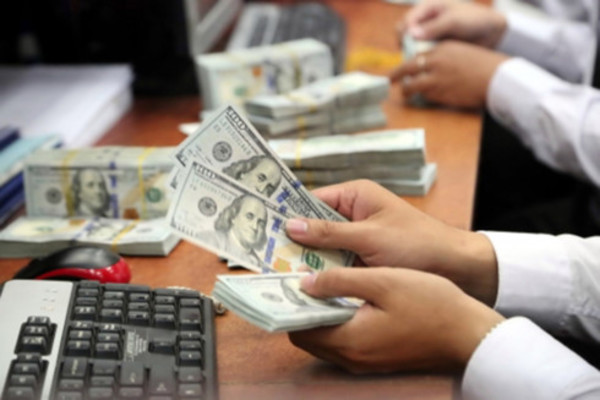 |
|
Foreign currency deposits at banks dropped sharply in H1 2019.
|
Vietnam’s anti-dollarization policies have taken effect with the level of dollarization in the economy continuing to decline sharply in recent years.
According to experts, the assessment of the dollarization level of an economy can be based on the ratio of foreign currency deposits to total deposits; and the ratio of foreign currency credit to total credit.
Meanwhile, according to financial statements of local banks, their ratio of foreign currency deposits to total deposits continued to drop sharply in the first six months of this year.
Total foreign currency deposits of the three large state-owned commercial banks with a strength of foreign currency trading - Vietcombank, Vietinbank and BIDV – slid by US$500 million in the first half (H1) of this year.
Specifically, at Vietcombank, its foreign currency deposits decreased by VND7.36 trillion (US$316 million) in H1 2019 to VND135.932 trillion (US$5.83 billion).
While Vietcombank’s total deposits increased by 8.6 percent to VND870.86 trillion (US$37.37 billion), the bank’s ratio of foreign currency deposits to total deposits fell rapidly from 17.9 percent at the end of 2018 to 15.6 percent at the end of H1 2019.
Similarly, foreign currency deposits at Vietinbank in H1 2019 also dropped by VND1.744 trillion (US$74.85 million) to VND54.211 trillion (US$2.33 billion), dragging the ratio of foreign currency deposits to total deposits to 6.4 percent from 6.8 percent at the end of last year.
Foreign currency deposits of BIDV also slid by VND2.493 trillion (US$107 million) to VND47.847 trillion (US$2.05 billion), causing the ratio of foreign currency deposits to total deposits to decline to 4.5 percent from 5.1 percent at the end of 2018.
Supportive policies
Experts attributed the success in the fight against the dollarization in the economy to the central bank’s effective policies, including the zero percent dollar deposit interest rate and the foreign exchange stability.
Currently, instead of holding the US dollar as previously, local people prefer to hold VND and deposit it at banks as they can get higher profits due to a large spread between interest rates of VND and dollar deposits and the VND/USD foreign exchange rate stability.
Interest rates of VND deposits are listed at some nearly 9 percent per year while the rate for dollar deposits is zero percent.
VND is also relatively stable, declining by only some 0.5 percentage points by the end of June and is forecast to be kept stable in the remaining months of the year.
To take more steps to further minimizing dollarization in the economy, the Vietnamese central bank has also required commercial banks to stop the provision of mid- and long-term foreign currency loans for offshore payments of imported goods and services from September 30 this year.
According to experts, the gradual narrowing of demand for foreign currency loans by the SBV is necessary and consistent with the government's anti-dollarization roadmap. Ending foreign currency lending will minimize distortion in the foreign exchange market when a series of free trade agreements are implemented.
Banking expert Phan Minh Ngoc said dollar lending makes dollarization of the economy more serious. As more local people use the dollar in daily transactions, the effect of the central bank’s policies would be reduced.
When inflation is high, the central bank wants to increase interest rates to control it. However, due to dollarization, local people will turn to loans in dollars rather than in VND, which will mean the central bank’s interest rate hike will have little effect.
This has been seen in some countries with hyper-inflation, where the dollar replaces the local currency while the countries’ central banks are unable to do anything. Hanoitimes
Hai Yen
 Experts attributed the success in the fight against the dollarization in the economy to the central bank’s effective policies, including the zero percent dollar deposit interest rate and the foreign exchange stability.
Experts attributed the success in the fight against the dollarization in the economy to the central bank’s effective policies, including the zero percent dollar deposit interest rate and the foreign exchange stability.